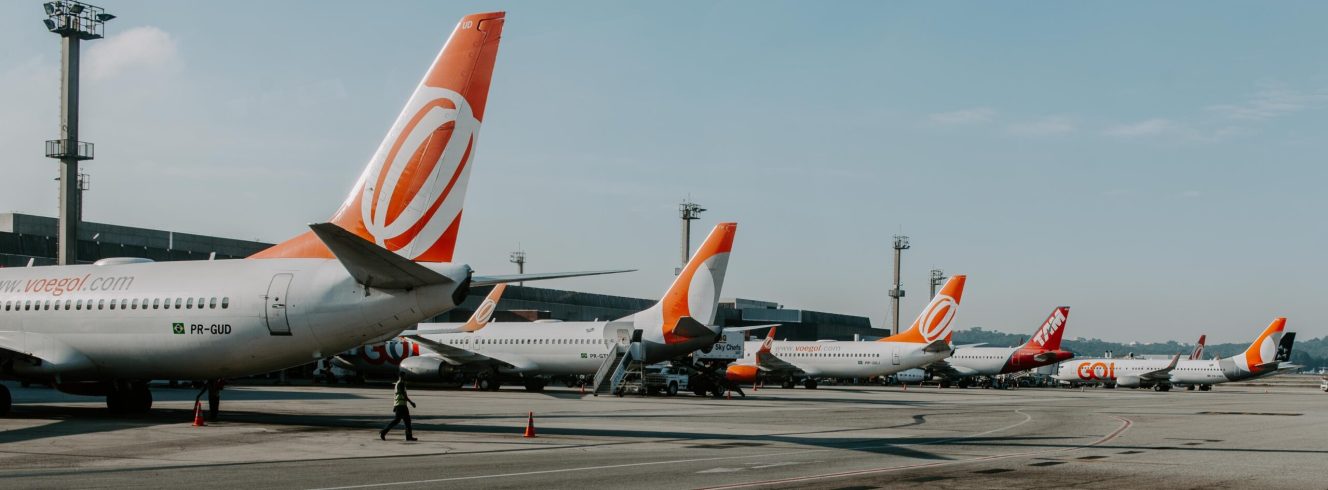In the aviation industry, operational industry is not a matter of it, but when . Weather delays, mechanical problems, crew scheduling issues, air traffic control holds, and random events such as airspace closures have the potential to cascade through your network within minutes, impacting thousands of customers and millions of revenue.
But most airlines still address these disruptions using old processes that were originally intended for a less complex operating environment.
As consumer expectations escalate and competition heightens, the distinction between airlines that only respond to disruptions and those that actively manage them is more important than ever. These are three unmistakable signs your disruption management process might be preventing your airline from reaching operational excellence.
Sign 1: Your Operations Center Feels Like a War Room During Every Weather Event
The Problem:
If every time there is bad weather or ATC delays, your operations team goes into panic mode—frantically going across multiple systems, basing decisions on incomplete data, and fighting to plan for recovery—you are operating a reactive disruption management process.
What This Looks Like:
- Operations controllers spending more time gathering information than making strategic decisions
- Crew scheduling, maintenance, and ground operations operating in silos
- Passenger service agents updated after passengers
- Recovery based on short-term pressures, not network optimization
- Post-disruption analysis weeks later, inhibiting learning
The Cost:
Reactive disruption management airlines usually experience 15–25% more expense in IROPS operations, with recovery 2–3 times longer than best-in-class. Customer satisfaction drops just as much, directly affecting loyalty and revenue.
The New Solution:
Forward-thinking carriers now deploy airline operation management software with Predictive Disruption Intelligence – Flight capabilities. With tools like a flight delay predictor or flight delay and cancellation prediction software, operations teams gain real-time network visibility, enabling proactive decisions that minimize disruption costs while protecting passenger experience.
Sign 2: You’re Still Treating Each Disruption as an Isolated Event
The Problem:
If your airline treats every disruption as a standalone issue without learning from patterns or considering network-wide implications, you’re missing critical opportunities for optimization.
What This Looks Like:
- Ground stops at one hub creating unexpected crew timeout issues elsewhere
- Maintenance delays cascading into legality issues
- Weather diversions creating avoidable connection challenges
- Repeated disruptions without systematic process improvements
- Limited visibility into how operational decisions impact revenue management and brand perception
The Cost:
This piecemeal strategy has your team repeatedly “reinventing the wheel” for each IROP, costing more and wearing out staff.
The New Solution:
Holistic visibility is offered by integrated airline policy automation software and airline data analytics and reporting software. An IROPS Dashboard for Airlines automatically evaluates network impact, coordinates recovery across departments, and captures learnings. Airlines see 30–40% reduced recovery times and fewer repeat issues by using predict flight delays and disruption trend insights.
Sign 3: Your Passenger Communication Strategy Is Always Playing Catch-Up
The Problem:
In the hyper-connected world we live in today, passengers can find out about delays from third-party apps ahead of your airline’s update. If your disruption management doesn’t include b, you’re not just handling operational complexities—you’re making customer service crises.
What This Looks Like:
- Generic delay updates hours too late sent to passengers
- Agents who can’t share personalized rebooking or compensation information
- Social media complaints propagating faster than your owned channels
- Passengers self-rebooking before you can provide a solution
- Customer service expense soars after the event
The Cost:
Ineffective communication of disruptions sparks 200–300% more complaints, with resolution costs frequently exceeding the initial disruption cost.
The New Solution:
Next-generation platforms layer in automated IROPS notifications, flight status alert notification, and even airlines chatbot into the disruption response. Travelers have real-time airline notification systems, self service reaccommodation proactive offers, and personalized information through airline AI chatbots. This not only enhances customer satisfaction but also speeds up network recovery by helping travelers navigate through smarter options such as reaccommodation flight or automated rebooking & compensation.
The Path Forward: From Reactive to Proactive Disruption Leadership
If any of these signs resonate, you’re not alone. Many carriers are realizing their legacy processes can’t keep up with today’s operational complexity and rising passenger expectations.
The disruptors in this sector have a mindset transformation: they see disruption management as a source of competitive strength and not an imperative evil. By investing in airline operation management software with capabilities such as airline chatbot integration, policy management software for airlines, and airline compensation management software, they save costs, build brand confidence, and unleash resilience over the long-term.
The Business Case for Modern Disruption Management
- Operational Efficiency: 20–35% faster recovery times
- Customer Satisfaction: 40–50% increase in NPS across IROPS
- Revenue Protection: Intelligent passenger rebooking and accommodation lowers costs associated with compensation
- Competitive Advantage: Seamless operations is a differentiator in the marketplace
- Organizational Learning: Each disruption adds muscle to the playbook
Taking the Next Step
It’s not just about technology—it’s about revolutionizing the way your airline manages complexity. With the appropriate tools, such as a self service portal for airline disruptions and sophisticated flight delay and cancellation prediction software, you can make disruption management a driver of passenger loyalty and operational excellence.
In an industry where operational dependability fuels customer confidence and profitability, the question is: Will your airline conquer disruption—or keep getting disrupted by it?



